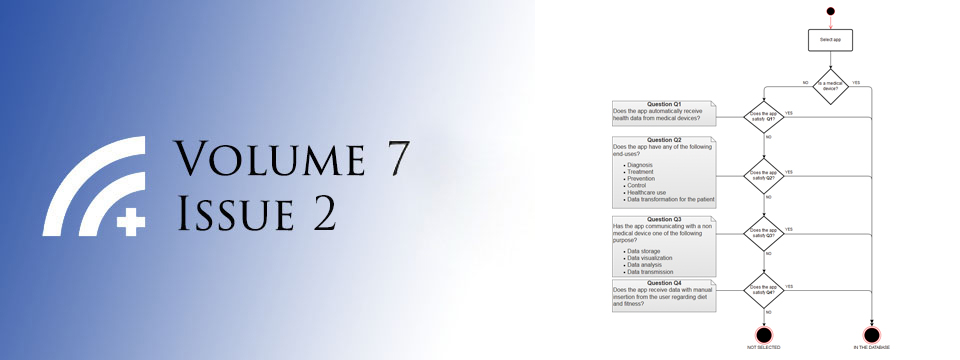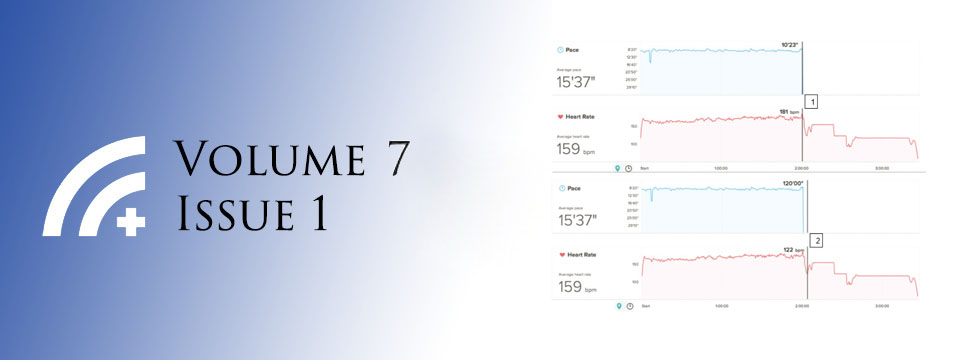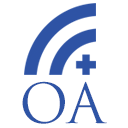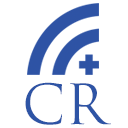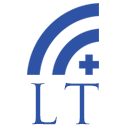Posted on Jul 30, 2013 in Original Article |
Melissa Reider-Demer DNP, MN, CPNP1
1Brandman University Irvine, Pediatric Neurology, Children Hospital Los Angeles, USA
Corresponding Author: mrdemer@mednet.ucla.edu
Journal MTM 2:2:3-7, 2013
http://dx.doi.org/10.7309/jmtm.2.2.2
Introduction: Inefficient transfer of health information among facilities fragments care and motivates duplicate interventions. This pilot study was designed to demonstrate the effectiveness of “Epilepsy at a Glance” (EAG), a portable medical record that contains medical records of children with epilepsy. This mobile tool enables medical providers to expedite information sharing to decrease fragmentation of patient care.
Methods: This randomized study included 30 children with epilepsy, 15 each in the experimental and control groups. The experimental group received the EAG while the control group received usual care and a medical alert bracelet at the end of the study. At the beginning and end of the study, participants completed a written survey about their contact with outside providers of epilepsy care. The experimental group was also surveyed at two follow-up clinical visits to determine the usage and impact of the EAG.
Results: The experimental group brought the EAG to over 90% of outside care encounters. More than 80% of primary care, 68% of urgent care, and 100% of emergency room providers viewed the EAG at the point of care. No outside provider who viewed the EAG inappropriately altered the established long term plan of care or performed duplicate testing. Patients and outside providers were enthusiastic about the value of the EAG.
Conclusions: This pilot study demonstrates the value of EAG usage by patients and medical providers, and suggests a promising use of transferring patient medical information using mobile technology. Future studies should be performed with larger groups using EAG or alternative devices to document improved care and reduction in test duplication.
Posted on Jul 30, 2013 in Case report |
Yulin Hswen MPH1, Vaidhy Murti2, Adenugbe A. Vormawor3, Robbie Bhattacharjee3, John A. Naslund MPH4
1Center on Media and Child Health, Boston Children’s Hospital, Boston, MA, USA; 2Department of Computer Science, Princeton University, Princeton, NJ, USA; 3Department of Computer Science, Dartmouth College, Hanover, NH, USA; 4The Dartmouth Institute for Health Policy and Clinical Practice, Lebanon, NH, USA
Corresponding Author: yulin.hswen@childrens.harvard.edu
Journal MTM 2:2:8-14, 2013
http://dx.doi.org/10.7309/jmtm.2.2.3
Background: Rapid growth in Smartphone use among children affords potential opportunities to target health behaviors such as dietary habits; however, few mobile health applications are specifically designed with these individuals in mind. This brief report describes our step-by-step approach towards developing a mobile health application for targeting nutrition behaviors among children.
Methods: Descriptions of the 10 most popular paid and 10 most popular free Smartphone applications available on the Apple iTunes store for ages 4 and up as of March 2012 were qualitatively analyzed. The relevance of key characteristics found in these applications was then further explored for their potential to improve dietary behaviours amongst children, and a mobile application was developed.
Results: Three prominent characteristics of the most popular applications emerged: 1) virtual avatars or characters (observed in 50% of the applications); 2) gaming (observed in 75% of the applications); and 3) social media (observed in 45% of the applications). These features were then incorporated into the design of a mobile health application called Avafeed, which uses a virtual avatar and gaming to help make choosing healthier food options easier among children. The application was successfully released onto the Apple iTunes Store in September 2012.
Conclusions: In this unconventional approach, evidence-based research was combined with information procured from a qualitative review of popular applications available on the Apple iTunes Store in order to design a potentially relevant and popular mobile health application for use among children.
Posted on Jul 30, 2013 in Perspective Pieces |
Dwayne Tun Soong Chang, MBBS1, Kaihan Yao, MBBS2
1Fremantle Hospital, Fremantle, WA 6160, Australia; 2Southern Health, Clayton, VIC 3168, Australia
Corresponding Author: Dwayne.Chang@health.wa.gov.au
Journal MTM 2:2:15-19, 2013
http://dx.doi.org/10.7309/jmtm.2.2.4
The use of tablet computers in surgery has been increasing due to a number of reasons, such as a highly portable build, useful clinical software and wireless connectivity. Tablet computers can be used in surgical consultations, operating theatres, post-operative care and surgical education. Current intra-operative uses are mainly in thoracic, orthopaedic and ophthalmic surgery where it was shown to improve surgical performance and safety. Tablet computers also play a key role in surgical consultation and telerounding via means of videoconferencing. This allows for better communication between doctors and patients and improves care delivery. Furthermore, telerounding can facilitate rapid post-operative review by surgeons, which can increase patient turnover, resulting in financial benefits for the hospital. In addition, virtual dissection software on tablet computers improves surgical anatomy teaching, reduces the need for cadavers and simplifies the process of dissection.
Posted on Jul 30, 2013 in Perspective Pieces |
Piroska A. Bisits Bullen1
1Technical Management Advisor, Cambodian Health Education Media Service (CHEMS) #104, St 472, Toul Tom Pong, Phnom Penh, Cambodia
Corresponding Author: piroska.bisitsbullen@gmail.com
Journal MTM 2:2:20–23, 2013
http://dx.doi.org/10.7309/jmtm.2.2.5
The use of mobile phones to deliver health programs (mHealth) has great potential in developing countries, and mHealth initiatives such as the NightWatch1 malaria prevention program are becoming increasingly popular. However, even when an mHealth intervention is known to be effective, the structure of the telecommunications industry, combined with user behaviours, can make it extremely difficult to implement in some countries.
Posted on Jul 30, 2013 in Letters |
Dhara N. Perera1
1Dr. MBBS, Bsc. (Hons), House Medical Officer – Eastern Health, Victoria; James Cook University, Queensland, Australia
Corresponding Author: dharanalika@gmail.com
Journal MTM 2:2:24–30, 2013
http://dx.doi.org/10.7309/jmtm.2.2.6
Background: Improved communications within the healthcare sector is imperative to enabling increased clinical efficiency and enhanced quality of patient care. Mobile phone use has been demonstrated to enhance clinical practice by improving communication between physicians, junior medical staff and other healthcare members.
Aims: This study aims to assess use of personal mobile phones to answer pager messages (use versus non-use) among Intern medical officers.
Methods: A literature search was performed. A survey instrument was designed to identify intern medical officers who used their mobile phones to answer pager messages and those who did not. 12 intern medical officers were surveyed. Verbal consent was obtained. Following completion of the instrument, when necessary, participants were asked to clarify their comments.
Results: Among the 12 intern medical officers, 8 intern medical officers (67%) used their personal mobile phone to answer pager messages. Main reasons highlighted were convenience, hospital phone accessibility and time-saving. Reasons for non-use by 33% participants were to keep work and private calls separate and not wishing to pay for work-related calls.
Conclusions: Those junior medical officers who answered pager messages using their mobile phone found it beneficial due to increased productivity. Those who did not chose to do so due to privacy and cost. Further validation with larger scale randomized control studies in this field are required.
Posted on Jul 30, 2013 in News |

The Editorial Board at the Journal of Mobile Technology in Medicine is proud to present Volume 2, Issue 2, published in July 2013. Mobile technology in Medicine is a rapidly developing area, and we hope to continue accelerating research in the field. We look forward to your submissions for Issue 3.
Editorial
001 Unusual Utilisation of Mobile Technology in Medicine
R. Halim

